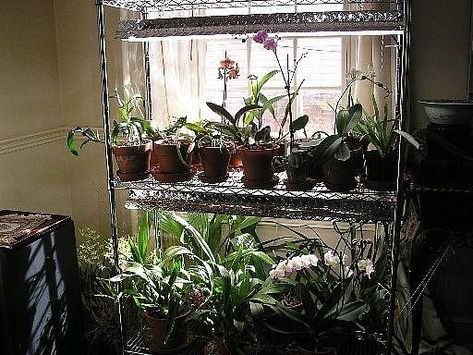Are you a proud orchid owner or considering adding these stunning flowers to your collection? Orchids are known for their beauty and elegance, but they also require specific care to thrive. One crucial aspect of orchid care is providing the right amount of light. In this article, we will explore the light requirements for orchids and provide you with all the information you need to ensure your orchids receive optimal lighting conditions.
1. Understanding Orchid Light Requirements
Orchids are unique plants that have evolved to thrive in various light conditions. However, different orchid species have different light requirements. Understanding these requirements is essential for providing the right amount of light to your orchids.
Generally, orchids can be categorized into three groups based on their light requirements:
- Low-Light Orchids: These orchids prefer low light conditions and can tolerate shade. They are ideal for growing indoors or in areas with limited natural light.
- Medium-Light Orchids: These orchids require moderate light levels. They can tolerate some direct sunlight but should be protected from intense midday sun.
- High-Light Orchids: These orchids thrive in bright, indirect light. They can tolerate more direct sunlight than other orchid varieties.
Here’s a table summarizing the light requirements for different types of orchids:
| Orchid Type | Light Requirement | Additional Tips |
|---|---|---|
| Phalaenopsis | Low to moderate indirect light | Bright, indirect light; avoid direct sunlight as it can damage the leaves. |
| Cattleya | Moderate to bright indirect light | Provide filtered or dappled sunlight; 2000-3000 foot-candles of light. |
| Dendrobium | Moderate to bright indirect light | Morning sunlight is beneficial; 2000-4000 foot-candles of light. |
| Oncidium | Moderate to bright indirect light | Bright, indirect light; 2000-3000 foot-candles of light. |
| Vanda | Bright indirect to direct light | Requires intense, bright light; 3500-4500 foot-candles of light. |
| Paphiopedilum (Lady Slipper) | Low to moderate indirect light | Provide indirect light; shield from direct afternoon sunlight. |
| Miltonia | Moderate indirect light | Provide filtered or dappled sunlight; 1500-2500 foot-candles of light. |
| Masdevallia | Low to moderate indirect light | Requires cool, indirect light; shield from direct sunlight. |
| Stanhopea | Moderate to bright indirect light | Provide bright, indirect light; 2000-3000 foot-candles of light. |
Light requirements can vary based on the orchid’s species, origin, and specific growing conditions. It’s essential to observe your orchids and adjust their light exposure accordingly to promote healthy growth and flowering.
2. Assessing Light Levels in Your Growing Area
Before determining the light requirements for your orchids, it’s crucial to assess the light levels in your growing area. Here are a few steps to help you evaluate the light conditions:
- Observe the area throughout the day to determine the amount of sunlight it receives.
- Check for any obstructions that may block or filter the light, such as curtains or trees.
- Use a light meter or smartphone app to measure the intensity of light in foot-candles or lux.
By understanding the light levels in your growing area, you can choose orchid varieties that will thrive in those conditions.
3. Providing the Right Light for Your Orchids
Once you have assessed the light levels in your growing area, it’s time to provide the right amount of light for your orchids. Here are some tips to help you:
- Low-Light Orchids: Place these orchids in areas with limited natural light, such as north-facing windows or rooms with fluorescent lights.
- Medium-Light Orchids: These orchids can be placed near east or west-facing windows, where they can receive moderate levels of sunlight without being exposed to intense midday rays.
- High-Light Orchids: These orchids thrive in bright, indirect light. South-facing windows or areas with bright, filtered light are ideal for high-light orchids.
It’s important to note that orchids may need to be moved or protected during extreme weather conditions, such as heatwaves or cold snaps, to prevent damage from excessive light or temperature.
4. Frequently Asked Questions about Light Requirements for Orchids
Q: Can orchids tolerate direct sunlight?
A: While some orchids can tolerate direct sunlight, most prefer bright, indirect light. Direct sunlight can cause leaf burn and damage the delicate flowers.
Q: How many hours of light do orchids need?
A: Orchids generally require 10-12 hours of light per day. However, this can vary depending on the species and their specific light requirements.
Q: Can I use artificial light for my orchids?
A: Yes, you can use artificial light sources, such as fluorescent or LED grow lights, to supplement natural light for your orchids. Make sure to position the lights at the appropriate distance to avoid burning the leaves.
Q: What are the signs of inadequate light for orchids?
A: Orchids that do not receive enough light may exhibit elongated stems, weak growth, and a lack of flowering. The leaves may also turn dark green or yellowish.
Q: Can I grow orchids in a windowless room?
A: It is challenging to grow orchids in a windowless room as they require some amount of light to thrive. However, you can use artificial light sources to create a suitable growing environment.
5. Conclusion
Providing the right amount of light is crucial for the health and growth of your orchids. By understanding the light requirements for orchids and assessing the light levels in your growing area, you can create an optimal environment for your plants to flourish. Remember to choose orchid varieties that match the light conditions in your home and make adjustments as needed. Now, go ahead and enjoy the beauty of your thriving orchids!
Fun Fact: Did you know that orchids are one of the largest families of flowering plants, with over 28,000 recognized species? From vibrant colors to unique shapes, orchids offer a wide range of options for plant enthusiasts around the world.
Originally posted 2023-09-09 11:49:17.



